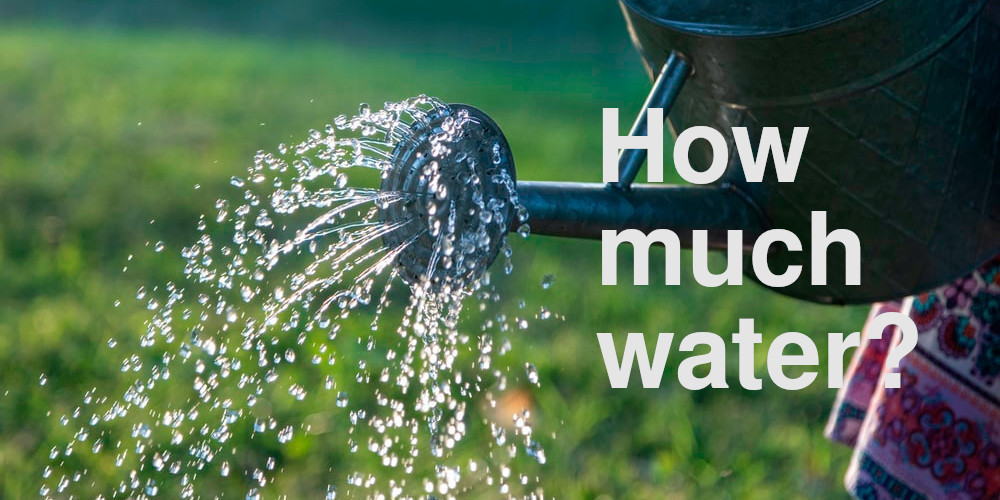How much water do vegetables need?

In the world of vegetable gardening, water plays a vital role in ensuring the health and productivity of your plants. Providing the appropriate amount of water can be a challenging task for gardeners, as both under-watering and over-watering can have detrimental effects. In this comprehensive guide, we will delve into the water requirements of different vegetables, exploring key factors such as soil type, climate, growth stage, and practical watering tips to help you achieve a thriving vegetable garden.
Watering Basics
Before we explore the specific water needs of various vegetables, it's essential to understand some fundamental watering principles. Consider the following factors:
-
Soil Type:
- Sandy soil drains quickly, allowing water to pass through rapidly.
- Clay soil retains moisture for longer periods.
- Loamy soil, a balanced mix of sand, silt, and clay, provides good drainage while retaining moisture necessary for plant growth.
-
Climate:
- Hotter and drier climates typically necessitate more frequent watering due to higher evaporation rates.
- Cooler and more humid climates may require less frequent watering.
-
Growth Stage:
- Seedlings and young plants have delicate root systems and may require more frequent watering compared to mature plants.
- Mature plants have developed root systems that can access water from deeper soil layers.
Watering Guidelines for Vegetables
To meet the specific water needs of your vegetable garden, consider the following guidelines:
-
Consistency is Key:
- Maintain consistent moisture levels for healthy plant development.
- Fluctuations between dry and wet conditions can stress the plants and hinder their growth.
-
Checking Soil Moisture:
- Before watering, check the moisture content of the soil by inserting your finger or a trowel a few inches into the ground.
- If the soil feels dry at this depth, it's an indication that watering is required. If it feels moist, you can hold off on watering for a little longer.
-
Deep Watering:
- Deep watering encourages the development of a robust root system.
- Watering deeply allows roots to grow deeper into the soil to access nutrients and water effectively.
- Deep watering helps plants withstand drought conditions better.
-
Morning Watering:
- Watering in the morning allows foliage to dry before evening, reducing the risk of diseases caused by prolonged leaf wetness.
- Morning watering ensures that plants have access to moisture during the day when they are actively photosynthesizing and growing.
-
Mulching for Moisture Retention:
- Apply a layer of organic mulch, such as straw, wood chips, or compost, around vegetable plants to retain soil moisture.
- Mulching reduces evaporation, suppresses weed growth, and moderates soil temperature.
- Mulching decreases the frequency of watering required.
Watering Needs of Common Vegetables
Different vegetables have varying water requirements due to their unique characteristics and growth habits. Here's a closer look at the water needs of some common vegetables:
-
Leafy Greens (Lettuce, Spinach, Kale):
- Leafy greens typically have shallow root systems and require consistent moisture.
- Water these plants regularly, keeping the soil evenly moist.
-
Tomatoes:
- Tomatoes benefit from deep watering, particularly during fruiting.
- Water the plants deeply, ensuring that the water reaches the root zone.
- Avoid over-watering, as excessive moisture can lead to root diseases.
- Reduce watering as the fruits ripen to prevent cracking.
-
Root Vegetables (Carrots, Radishes, Beets):
- Root vegetables require moisture to ensure proper root development.
- Keep the soil consistently moist but avoid waterlogging, which can cause rotting.
- Provide enough water to support growth but avoid excessive watering, which can result in misshapen or stunted roots.
-
Cucumbers and Squash:
- Cucumbers and squash are vining vegetables that require regular watering to support their rapid growth.
- Aim to keep the soil evenly moist throughout the growing season.
- Pay special attention to watering during flowering and fruiting stages to promote fruit development.
-
Peppers and Eggplants:
- Peppers and eggplants are heat-loving vegetables that appreciate regular watering, especially during flowering and fruiting stages.
- Keep the soil slightly moist, but avoid excessive water retention, which can lead to root diseases.
Conclusion
Understanding the water requirements of vegetables is crucial for successful gardening. By considering factors such as soil type, climate, growth stage, and the specific needs of different vegetables, you can provide adequate water to promote healthy plant growth, maximize productivity, and enjoy a bountiful vegetable harvest. Remember to maintain consistency, check soil moisture regularly, water deeply, and mulch to retain moisture. With these guidelines in mind, your vegetable garden is on its way to flourishing abundantly.

